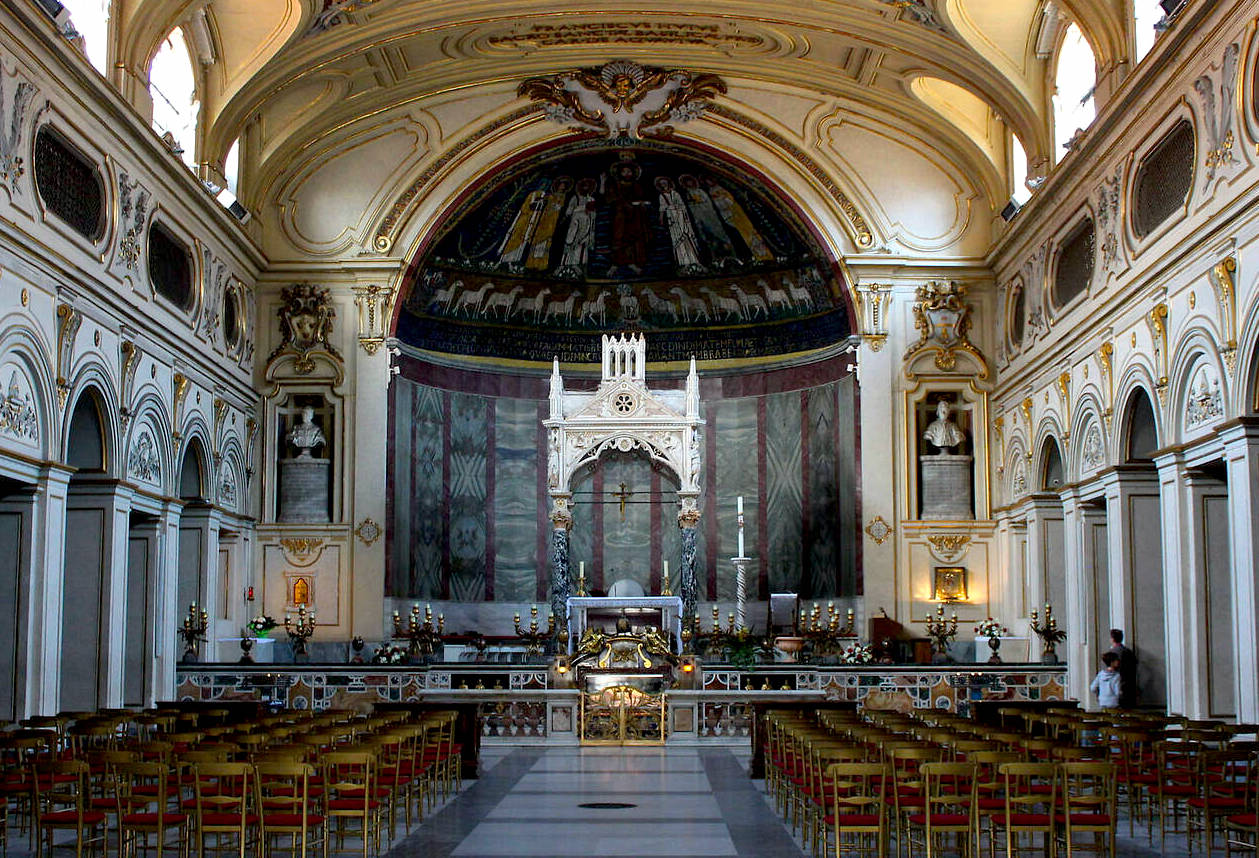
24 Jan The Church of Santa Cecilia in Trastevere – Part I
The Church of Santa Cecilia in Trastevere is maybe one of the less famous among the many churches in this popular area of Rome but nonetheless, it’s one of the most stunning for its many hidden gems,
Trastevere is a very popular and scenic neighborhood located on the west bank of the Tiber, south of the Vatican, whose name derives from Latin “Trans Tiberin”, literally across the Tiber. In the early times of Rome, it was the enemies’ bank, as the land west of the Tiber belonged to the Etruscans.
After the Etruscans were defeated and slowly absorbed by the Romans, Trastevere will be populated mostly by immigrants, sailors, and fishermen, due to the presence of the near riverport. Had you walked in Trastevere 2,000 years ago, you’d have heard people speaking different languages.
Trastevere still retains its charming medieval aspect with its narrow winding streets, tower houses and important churches.
Among the famous churches in Trastevere, there’s one hidden in the backstreets, the Church of Santa Cecilia, This special church offers some insight into the various phases of this ancient neighborhood.
According to tradition, Santa Cecilia was a Roman martyr who lived in the III century AD. She had to marry against her will to a man called Valerian, whom she’ll convert and convince to respect her virginity. She gave all her possessions to the poor, which enraged the prefect Almachius, who ordered her to be burned. When the flames did not harm her, she was beheaded.
Allegedly, the church was built over the house of the saint and as a matter of fact, there are some ancient Roman buildings under the church.
The current church features a portico built in the early XVIII century when the medieval church was renovated in the early XI century AD. Once inside the portico, there are buildings flanking the central fountain as Santa Cecilia is the seat of the Benedictine nuns.
Among the most incredible works of art is the statue of saint Cecilia sculpted by Stefano Maderno for the high altar. In 1599 Rome was getting ready for the Holy Year, a year of pilgrimage held in 1600, and the body of Cecilia was unearthed from under the altar. Miraculously, the body appeared in a perfect state of preservation and the populace flocked to see Cecilia still wearing a turban on her head and with an evident gash in her neck. The sculptor was instructed to portray her the same way her body had been found, immortalized with her right hand making the gesture of the Trinity.
The statue of Santa Cecilia is located under the intricate gothic ciborium by Arnolfo di Cambio (1293), a famous Italian architect and sculptor, who also initially designed the Duomo in Florence. Arnolfo di Cambio contributed to import gothic features in Rome, being centered around a pitched roof, having trefoil arches, gables and pinnacles.
The four corner statues on the ciborium in S. Cecilia in Trastevere can be identified as representations of Saint Cecilia, her husband Saint Valerian, her brother-in-law Saint Tiburce, and the blessed pope Urban, who was Cecilia’s spiritual guide.
In the apse of the church of Santa Cecilia, the mosaics date back to pope Paschal I (817-824) who renovated the church, and who appears then carrying a model of his church. In the center of the mosaic stands Christ. To the right St. Peter, St. Valerian and , St. Cecilia. To the left stand St. Paul, St. Agatha, and Paschal I. Pope Paschal has a square, blue halo used in early medieval paintings and mosaics to identify living figures.
If interested in finding out more about the Church of Santa Cecilia, join my tour of Trastevere: https://www.seeromewithme.com/jewish-ghetto-trastevere-tour/

